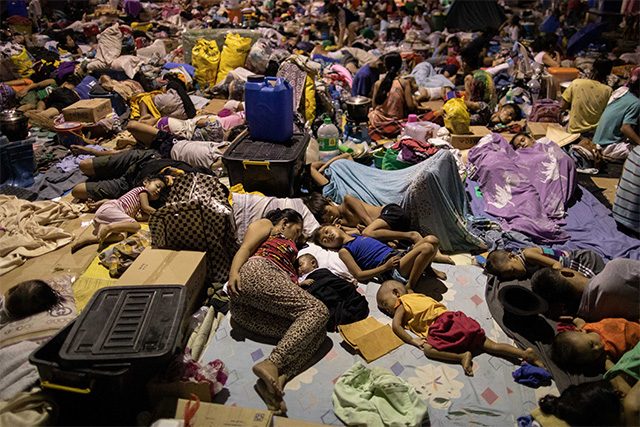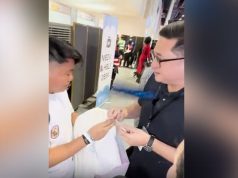
The Office of Civil Defense and other personalities advised the public to be cautious on where they are sending cash donations after scam donation drives for the victims of recent typhoons proliferated online.
Following the onslaught of tropical cyclones Ulysses, Rolly and Quinta the phrase “call for donations” became the trending topics on Facebook and Twitter where various groups and individuals shared their fund-raising initiatives for the typhoon victims.
However, the OCD’s National Disaster Risk Reduction and Management Council (NDRRMC) warned the public that they received reports of “bogus” donation drives by individuals taking advantage of the situation.
In a statement on Sunday, November 15, the disaster agency warned the public against these scammers.
“Binibigyang babala ang lahat ng mga kababayan natin na ninanais na tumulong sa mga nasalanta ng mga nakalipas na bagyo ang mag-ingat at suriing mabuti ang kanilang mga pagbibigyan ng donasyong cash o in-kind. Mayroon pong mga taong sinasamantala ang panahon na ito upang makapanloko ng kapwa at pagkakitaan ang kabutihan ng ating mga kababayan,” it said.
The agency advised the public to instead course their donations to established organizations only, citing NDRRMC’s Donation Vocal where the public can coordinate to.
“Pinapayuhan ang lahat na tiyaking ang inyong pagbibigyan ng donasyon ay mga establisadong mga organisasyon o institusyon na may ‘proven-track record’ na sa larangan ng pagbibigay tulong na sa mga nasalanta,” it said.
“Huwag po hayaang masayang o mapunta sa mali ang inyong tulong. Maaari pong makipag-coordinate sa NDRRMC Donation Focal para sa inyong mga donasyon sa numerong: 09178275743,” it added.
As of November 15, the NDRRMC reported that the death toll rose to 69 with over 1.7 million people or 426,000 families affected by Ulysses.
How these bogus donations schemes look like
Facebook user named Junie Tabao shared on November 14 screenshots of a private conversation with a person who initially introduced himself as a solicitor of donations but turned out to be a scammer.
Bam Aquino, former senator, likewise shared screenshots of an account using the name “Kaya Natin” which refers to the non-government organization Kaya Natin Movement to deceive users.
Aquino also provided the official Twitter and Facebook pages of Kaya Natin that should be followed instead.
“WARNING: MAG-INGAT SA SCAM! May natanggap kaming report na may mga gumagamit ng pangalan ng Kaya Natin para linlangin ang mga tao sa pagdo-donate. HINDI ITO TAMA. Hindi katanggap-tanggap ang panlalamang at panlilinlang na ginagawa ng ibang tao sa panahon ng sakuna. #ReliefPH,” he said.
WARNING: MAG-INGAT SA SCAM! May natanggap kaming report na may mga gumagamit ng pangalan ng Kaya Natin para linlangin ang mga tao sa pagdo-donate.
HINDI ITO TAMA. Hindi katanggap-tanggap ang panlalamang at panlilinlang na ginagawa ng ibang tao sa panahon ng sakuna. #ReliefPH pic.twitter.com/GNIdIdCFEy
— Bam Aquino (@bamaquino) November 15, 2020
Gadget Addict, a foreign vlogger who often accompanies the Metropolitan Manila Development Authority in their operations, also shared another screenshot of an unverified private conversation where an individual solicited P7,000 worth of cash only to purchase expensive gaming accessories.
The vlogger also shared a copy of NDRRMC’s advisory against fake relief drives.
“Beware of people soliciting donations online. If they don’t have a proven track record, don’t trust them. Photos and videos of relief operations aren’t for pogi points, they’re to prove that donations really make it to the right people,” his post said.
The vlogger also recalled being a victim of such scams online. He then suggested to donate in-kind directly to the Philippine Coast Guard.
“Remember, you can deliver food, water and hygiene kits directly to the Philippine Coast Guard and they will deliver them to Cagayan Valley and Bicol regions,” he said.
Twitter user @gyustachee, meanwhile, took the time to collate and share links and screenshots of individuals or groups conducting these fraudulent activities.
a thread of scammers —
— ًrt 📌 (@gyustachee) November 14, 2020









